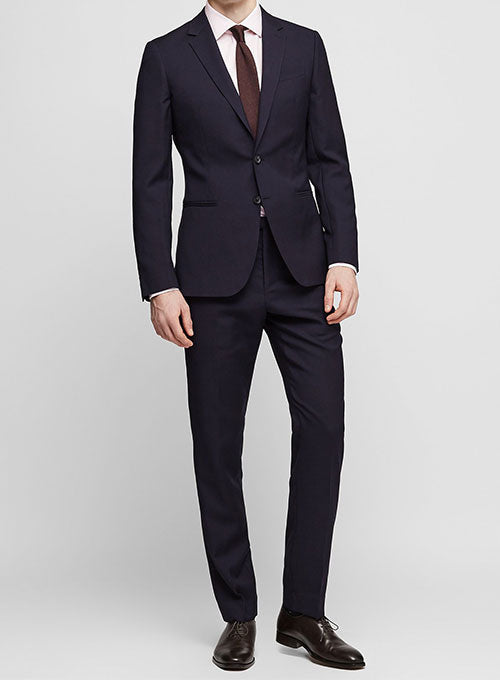Wedding Suits Perth: Tailored Perfection for Your Big Day
Wedding Suits Perth: Tailored Perfection for Your Big Day
Blog Article
Comprehending the Tailoring Refine: From Fabric Option to Final Fitting for the Perfect Wardrobe
The customizing process is a complex interplay of art and science, beginning with the crucial choice of material selection and culminating in the exact changes of final installations. Each material type brings one-of-a-kind high qualities that affect not just the aesthetic allure yet additionally the garment's durability and viability for various celebrations. Comprehending the subtleties of customizing methods can raise one's closet to unmatched levels of class. As we discover these elements better, one have to think about how also the tiniest details can dramatically affect the total end result of one's individual style.
Relevance of Material Selection
Picking the best textile is important in the customizing procedure, as it directly influences the comfort, resilience, and total visual of the last garment. The option of textile sets the structure for the garment's performance, capability, and design. Different fabrics have unique homes, such as breathability, stretch, and weight, which can substantially affect exactly how the garment drapes and fits the body.

A customized piece made from a suitable material not just showcases craftsmanship yet also elevates the wearer's self-confidence. Consequently, understanding the subtleties of material choice is vital for any tailoring venture. It makes sure that the last product not only satisfies the visual needs of the client yet also straightens with practical demands, therefore achieving an unified balance between form and function in the customized closet.
Sorts Of Fabrics and Their Usages
Understanding the numerous sorts of materials available is essential for making informed choices during the customizing process. Each fabric has one-of-a-kind qualities that dictate its suitability for details garments and events.
Its adaptability enables it to be customized right into everything from t-shirts to gowns. Its all-natural elasticity helps garments maintain form over time.
Silk emanates deluxe and is light-weight, making it best for eveningwear and fragile shirts; however, it needs mindful handling due to its frailty. Bed linen, with its textured coating, is a preferred choice for cozy environments, offering a crisp and airy feeling, however it wrinkles quickly, which may affect the garment's look.
Synthetic textiles, such as polyester and nylon, offer durability and resistance to creases, making them appropriate for everyday wear and energetic garments. Understanding these textile types and their buildings permits much better decision-making, ensuring that each customized item not just fits well however likewise straightens with the designated function and celebration.
The Tailoring Techniques Clarified
The art of tailoring counts on a range of methods that change material into well-fitted garments. Central to this procedure is pattern drafting, where a tailor develops templates based upon the customer's dimensions and desired design. This initial step ensures that the garment will certainly fit the wearer correctly prior to any type of reducing takes place.
When patterns are developed, cutting strategies come right into play. Precision is critical as mistakes can cause misfitting garments. Tailors typically use different reducing methods, such as single-layer cutting for intricate designs and multiple-layer reducing for performance on typical patterns.
Basting is one more essential method, permitting tailors to temporarily sew textile assemble for a preliminary installation (top tailor perth). This technique uses the possibility to examine the drape and general silhouette before final sewing
Seaming strategies, consisting of flat-felled joints and French joints, enhance the garment's longevity and aesthetic appeal. Tailors also employ techniques such as interfacing and extra padding to give structure and form to details areas, like collars and shoulders.
Last but not least, completing techniques, including hemming and edge finishing, make certain the garment's durability while offering a see sleek appearance. With each other, these methods create the foundation of reliable tailoring, leading to elegant, tailor-made garments.

Fitting Adjustments and Considerations
After the preliminary tailoring methods have been used and the garment is built, suitable modifications become extremely important to accomplishing the perfect fit. These adjustments resolve various facets of the garment, guaranteeing it contours to the wearer's body shape and boosts total appearance.

The rise of trousers is one more crucial element; it needs to rest conveniently over the hips without causing discomfort, permitting for simplicity of activity. Hemming lengths for both trousers and skirts should reflect the user's recommended style while appreciating percentages.
Furthermore, interest must be provided to the rear of the garment, making certain that there are no undesirable pulls or excess textile - tailor suits perth. Each modification needs to be carefully thought about, as even minor changes can considerably influence the total fit and aesthetic of the tailored piece, eventually leading to a wardrobe that radiates confidence and elegance
Maintaining Your Tailored Clothes
Constantly follow the treatment label instructions, which may suggest completely dry cleansing for fragile textiles or device cleaning for even more resilient products. Avoid frequent laundering, as this can put on down the material and change the garment's form.
Storage is equally important; use padded wall mounts for jackets and layers to preserve shoulder framework, and store pants folded up neatly or hung to avoid creasing. Secure garments from direct sunlight, which can fade colors and damage fibers.
Additionally, periodic examinations for minor repair work can prevent bigger problems. Inspect for loosened buttons, fraying joints, or indicators of moth damages, addressing these troubles immediately to keep the garment's stability.
Finally, consider seasonal rotation. Putting on tailored pieces in small amounts permits materials to recover, expanding their life-span. By applying these maintenance methods, you can make sure that your customized garments remain as pristine as the day you first wore them, boosting your excellent wardrobe for years ahead.
Verdict
The customizing process, encompassing material selection, proficient techniques, and accurate fitting adjustments, plays a crucial function in developing garments that boost both convenience and style. Each phase adds to the general effectiveness of the end product, making sure that garments not just fits well yet also reflects individual identification. Furthermore, recognizing the value of upkeep my site prolongs the life of customized garments, solidifying their worth in a well-curated closet. A thorough technique to tailoring culminates in a sleek and positive appearance.
Report this page